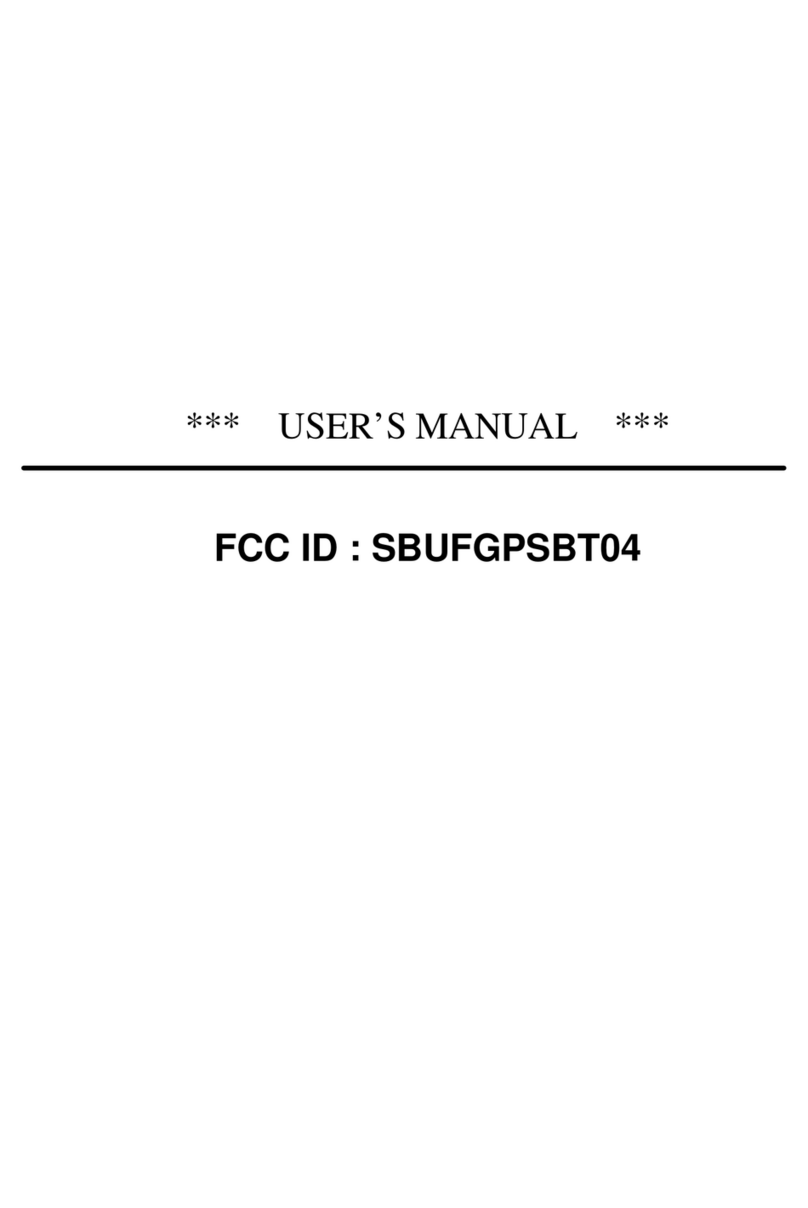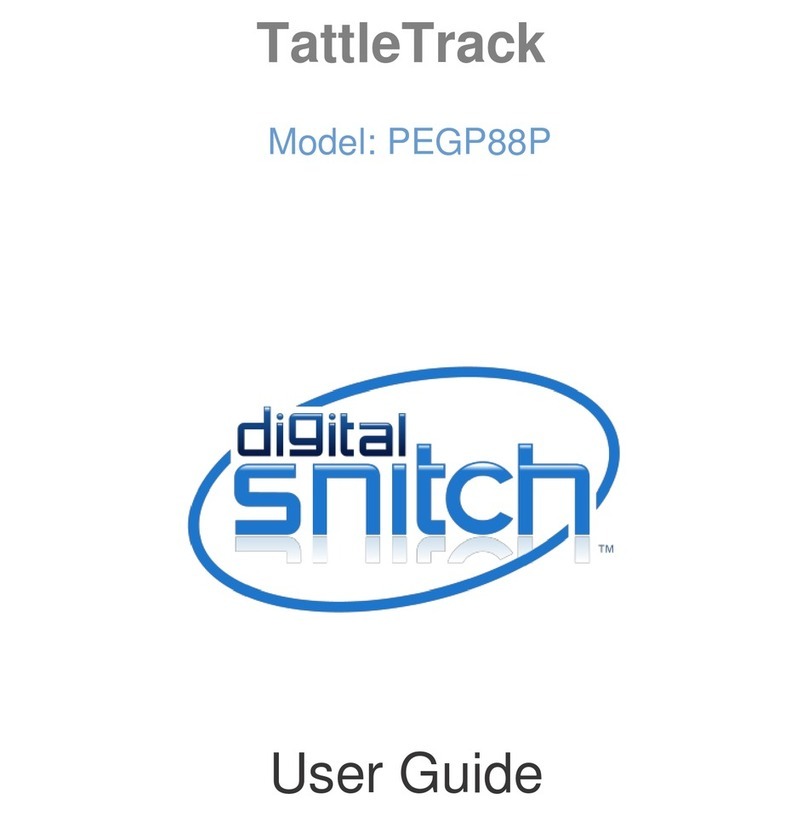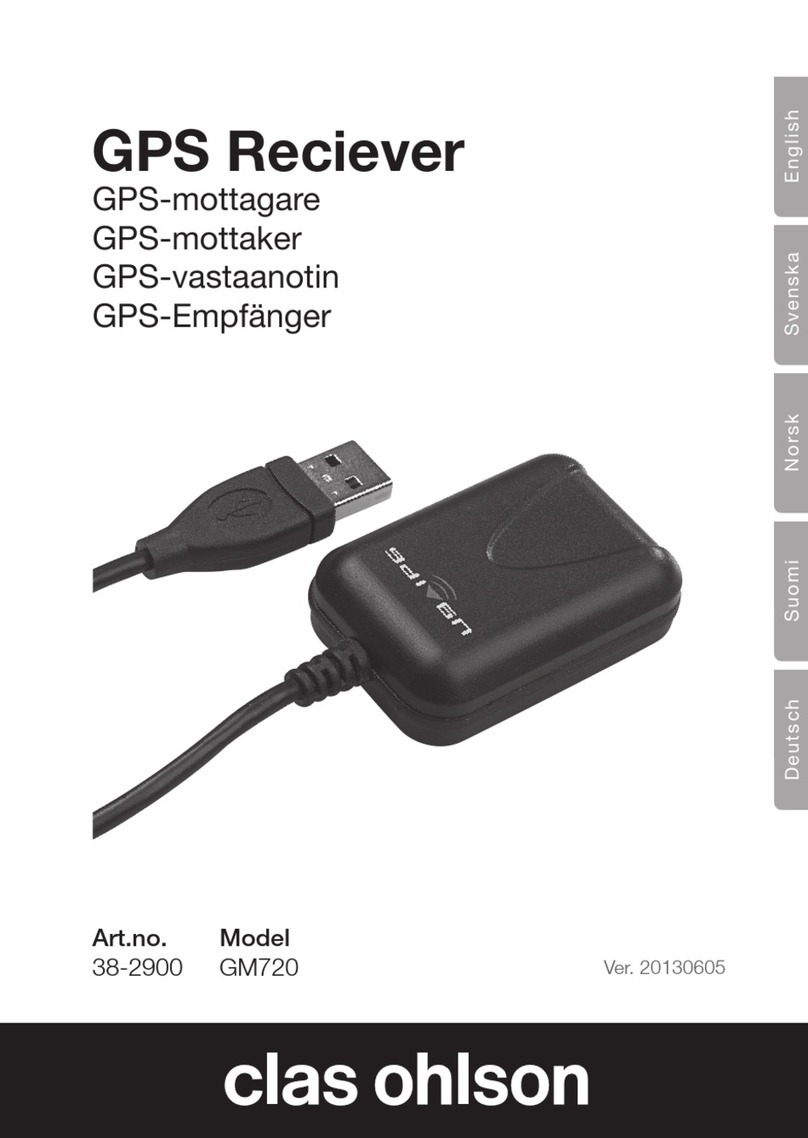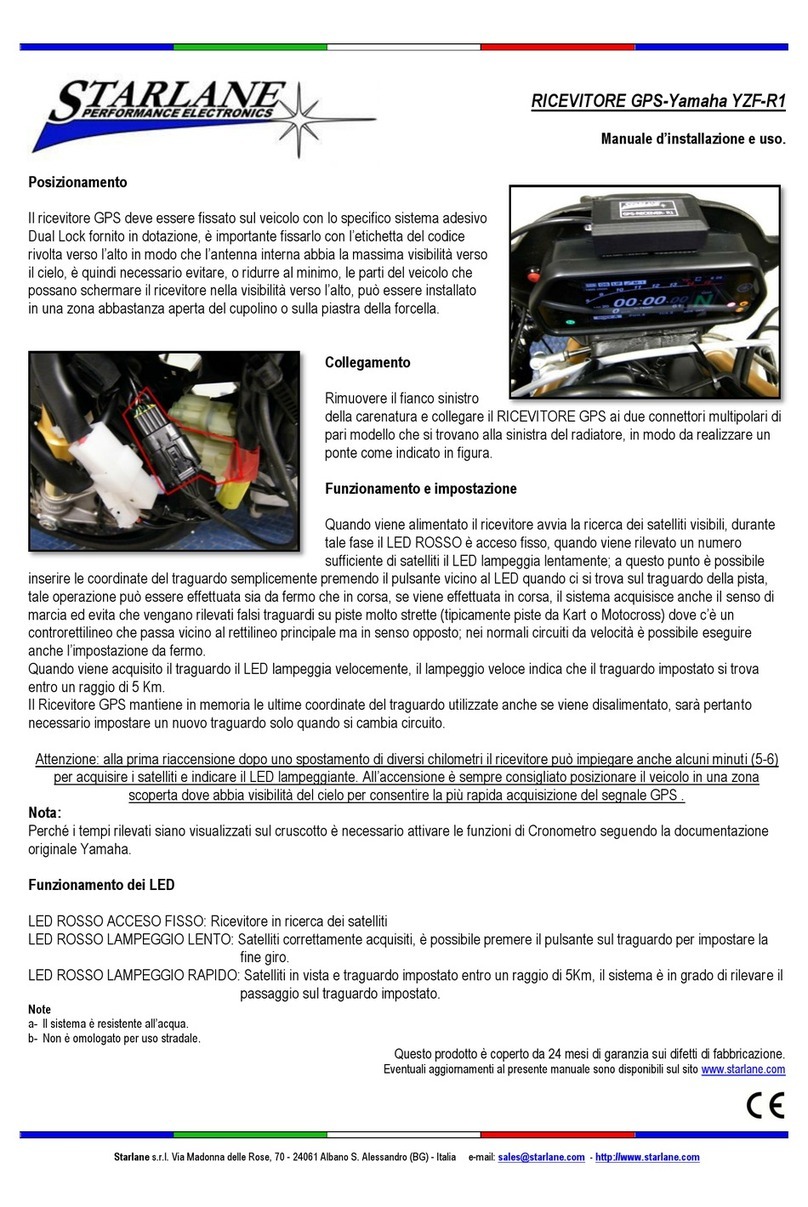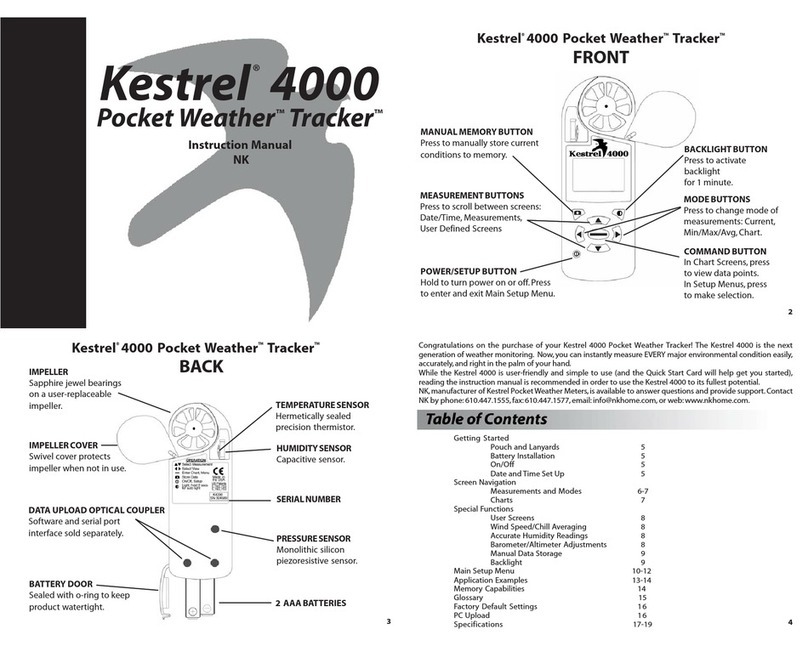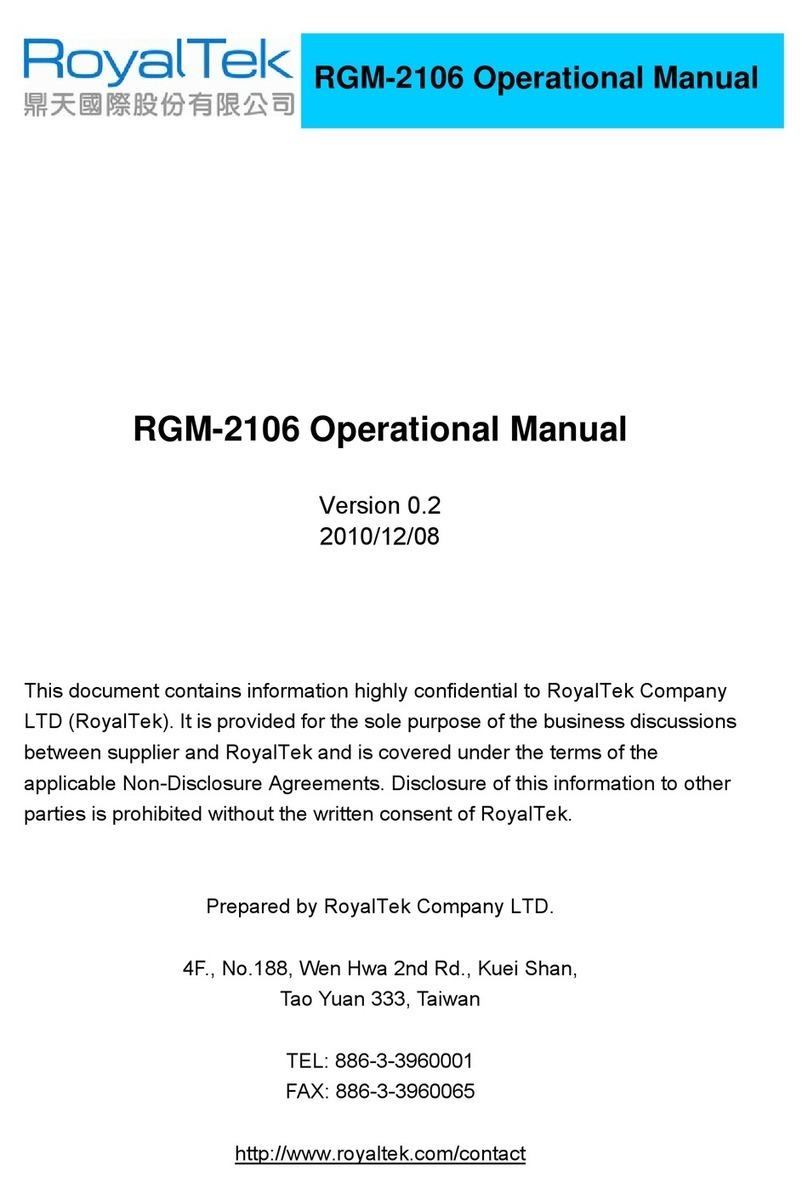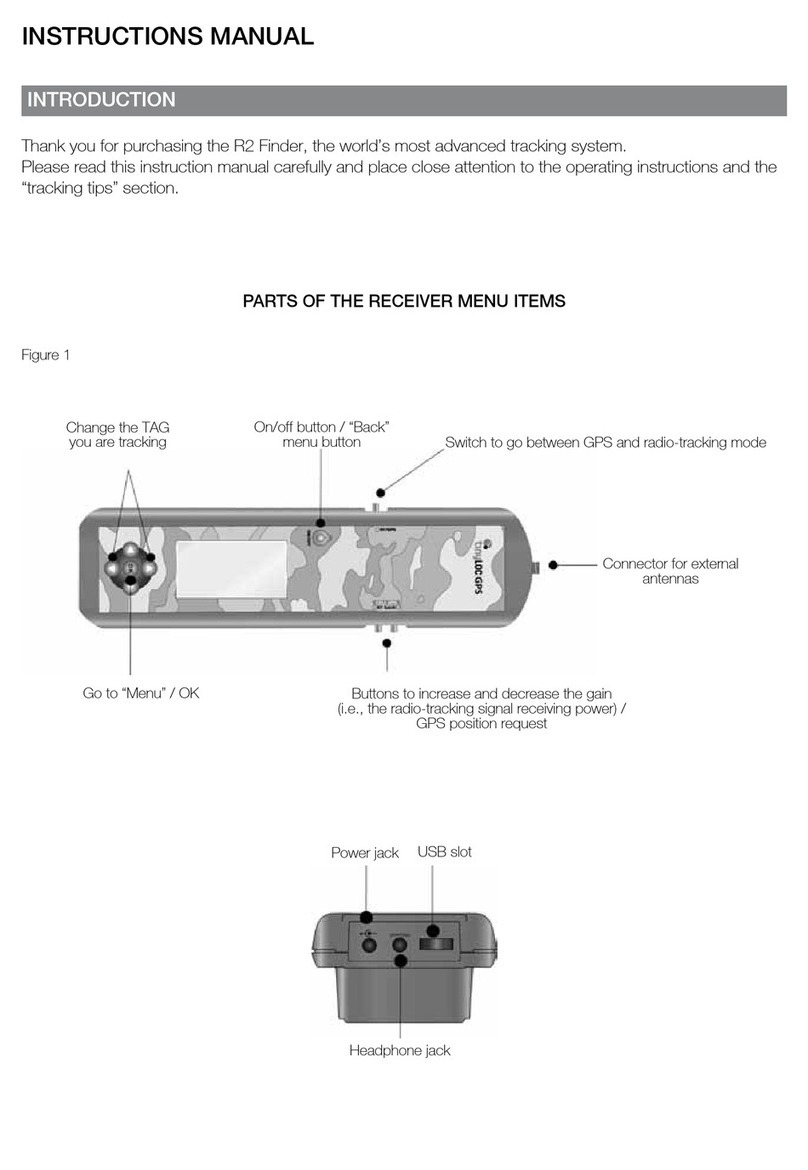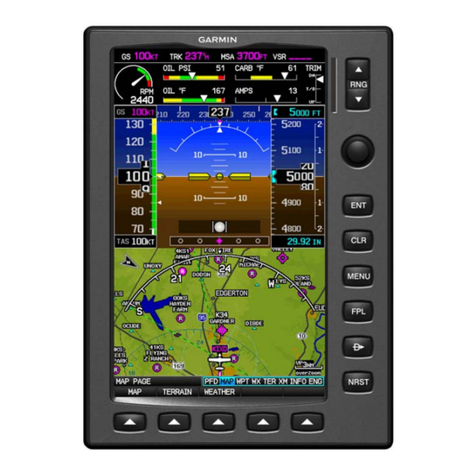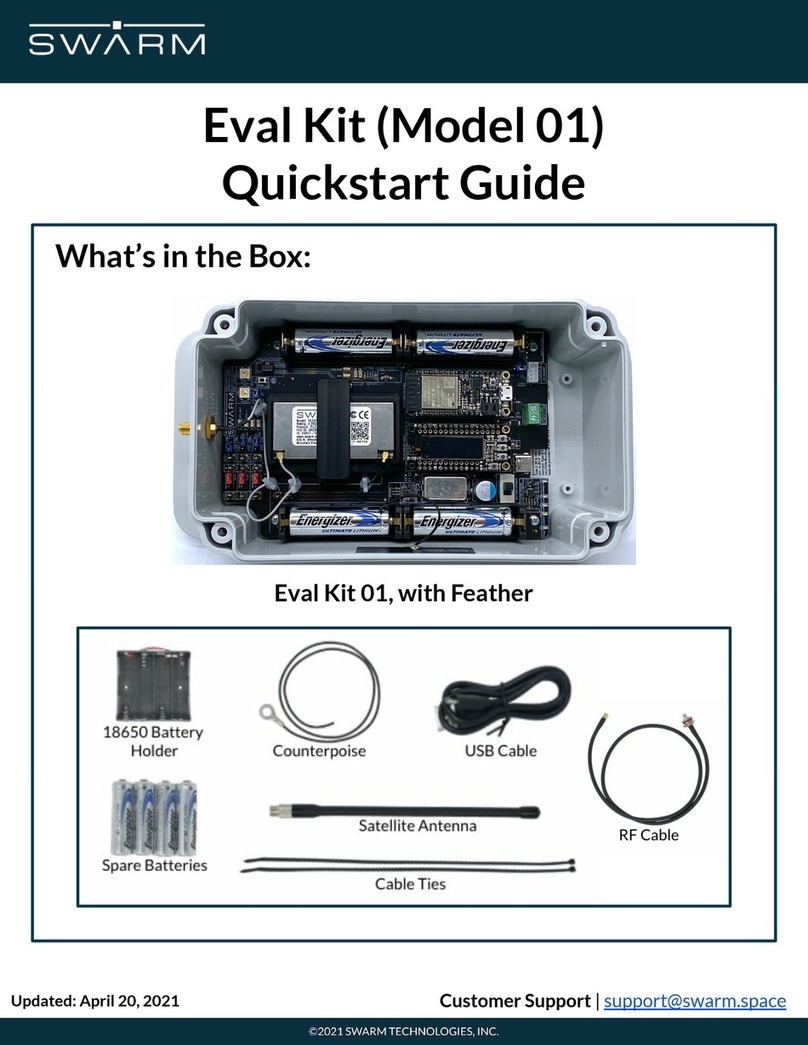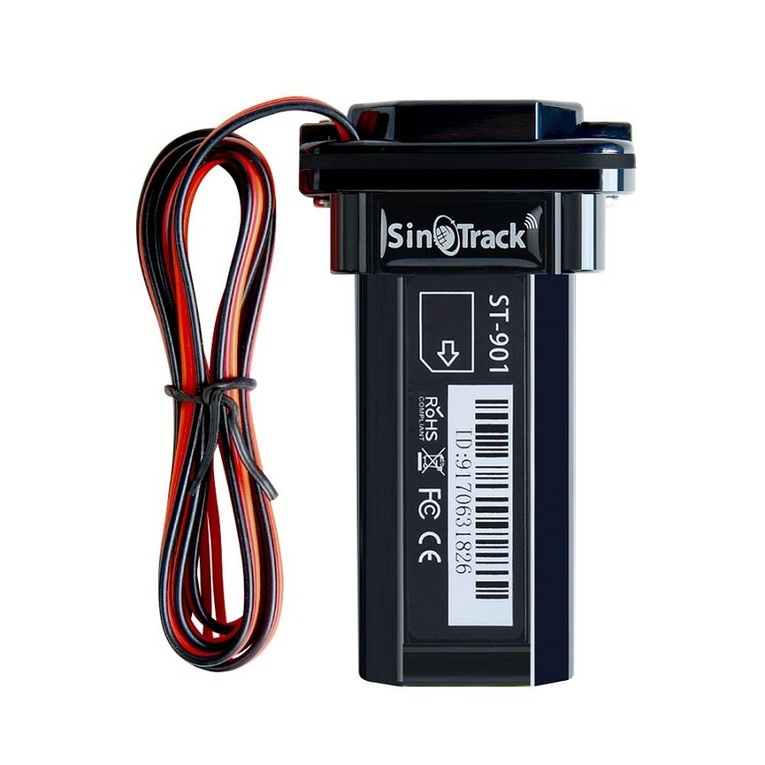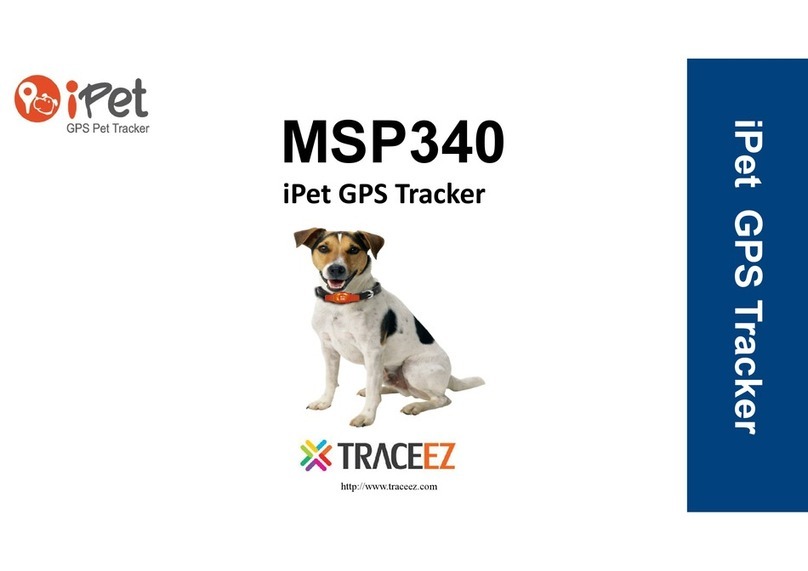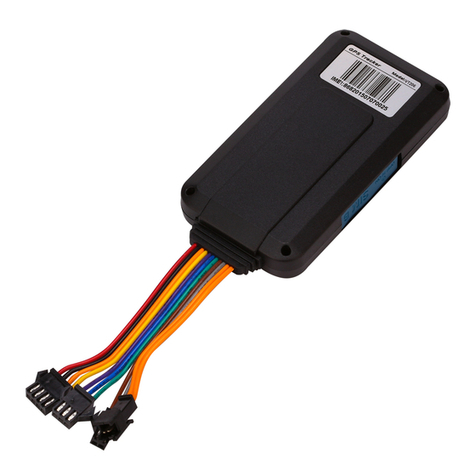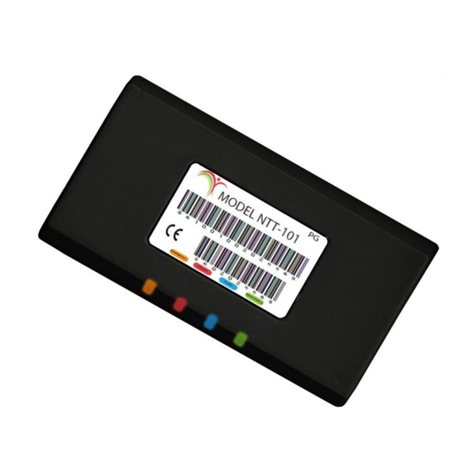Stars Navigation Technologies MTI-1 User manual

Stars Navigation Technologies Ltd
MTI-1 GPS receiver User Guide
MTI-1 Features
SiRF starII high performance and low power
consumption chip set
Support standard NMEA 0183 protocol
All-in-view 12-channel parallel processing
SnapLock 100ms re-acquisition time
Cold start under 45 seconds, average
Superior urban canyon performance
FoliageLock for weak signal tracking
Optional build-in SuperCap to reserve system data for rapid
satellite acquisition.
Full-duplex RS-232 port for navigation and control messages
Architecture
Differential GPS capability through 2nd RS-232 port

1
Stingray( STR-1 ) Antenna Specifications
Electrical Characteristics
Receiver
Frequency L1, 1575.42MHz
C/A code 1.023MHz chip rate
Channels 12
Sensitivity -170dBW
Accuracy
Position Horizontal 15m 2d RMS (SA off)
10m 2d RMS,WAAS enable(SA off)
1 ~ 5 m, DGPS corrected
Velocity 0.1m/sec 95% (SA off),
Time 1 microsecond synchronized to GPS time
Datum WGS-84
Acquisition Rate
Reacqusition 0.1 sec., average (recovery time for being
interrupted)
Hot start 8 sec., average (with ephemeris and
almanac valid)
Warm start 38 sec., average (with almanac but not
ephemeris)
Cold start 48 sec., average (neither almanac nor
ephemeris)
Dynamic Condition
Altitude 18,000 meters (60,000 feet) max
Velocity 515 meters/sec. (1000knots) max
Power
Voltage supply 3.8Vdc ~ 6.5Vdc
Current supply Continuous mode: 60mA typical
Backup Power Trickle power mode: 25mA typical +2.5V to
+3.6V
Backup Current 10uA typical
Serial Port one for GPS, one for DGPS
Ports
Electrical level TTL level Output voltage level : 0 ~ 3.5v
RS-232 level
Communication Full duplex asynchronous
Code type ASCII
GPS Protocol SiRF binary/NMEA 0183
changeable(Default:NMEA)
GPS Output MessageSiRF binary >> position, velocity, altitude,
status and control , NMEA0183 >> GGA,
GSA, GSV, RMC (VTG and GLL are
optional)
GPS transfer rateSoftware command setting
(Default : 4800bps for NMEA)
DGPS protocol RTCM SC-104, ver 2.00, type 1, 2, and 9
Time Mark> (1 PPS
Pulse)
Level TTL
Pulse duration 100ms
Time reference At the pulse positive edge
Measurement Aligned to GPS sec., +/- 1us

2
Active Antenna
Connector MCX ,SMA ,SMB or others OEM specified connector available,please refer to
our gps antenna product
Environmental Characteristics
Temperature
Operating -30 deg. C to +80 deg. C
Storage -40 deg. C to +85 deg. C
Physical
Characteristics
Dimension:
PCB SIDE VIEW
PCB TOP VIEW
Interface Connection
* Pin-out of the 20-pin interface connector

3
PinNumber Name Description Type
1 VANT Antenna DC Voltage Input
2 VDC 3.8V~6.5V DC Power Input Input
3 VBAT Backup Battery Input
4 VDC (Shorted with pin 2) Input
5 PBRES Push Button Reset Input (Active Low) Input
6 RESERVED (Reserved)
7 SELECT Down-load data from RS232 to flash
ROM (Reserved)
8 RESERVED (Reserved)
9 RESERVED (Reserved)
10 GND Ground
11 TXA Serial Data Output A (GPS Data) Output
12 RXA Serial Data Input A (Command) Input
13 GND Ground
14 TXB Serial Data Output B (No Used) Output
15 RXB Serial Data Input B (DGPS Data) Input
16 GND Ground
17 RESERVED (Reserved)
18 GND Ground
19 TIMEMARK 1PPS Time Mark Output Output
20 RESERVED (Reserved)
Interface description
* VANT (antenna DC power input):
DC voltage is for active antenna.
* VDC (DC power input):
This is the main DC supply for a 3.8V ~ 6.5V power module board.
* VBAT (Backup battery):
This is the battery backup input that powers the SRAM and RTC when main power is
removed .Typical current draw is 10uA. Without an external backup battery or Gold-capacitor,
the module/engine board will execute a cold star after every turn on. To achieve the faster
start-up offered by a hot or warm start, either a battery backup must be connected or a
Gold-capacitor should be installed. To maximize battery lifetime, the battery voltage should not
exceed the supply voltage and should be between 2.5v and 3.6v.
* PBRES (Push button reset):
This pin provides an active-low reset input to the engine board. It causes the engine board to

4
reset and start searching for satellites.
* SELECT :
Do not connect.
* TXA :
This is the main transmits channel for outputting navigation and measurement data to user’s
navigation software or user written software.
MTI-1(TTL): TTL level , 0V ~ 3.5V
MTI-1(RS232): RS232 level
* RXA :
This is the main receive channel for receiving software commands to the engine board from
SiRFdemo software or from user written software.
Normally this pin must be kept in high, and if you don’t use this pin please connect a resistor to
3.5V to pull high.
* TXB :
No function as so far (Do not connect)
* RXB :
This is the auxiliary receive channel for inputting differential corrections to the engine board to
enable DGPS navigation.
* Time mark :
This pin provides one pulse-per-second output from the engine board that is synchronized to
GPS time.
* GND :
GND provides the ground for the engine board. Connect all grounds.
* Others :
Do not connect.
2. SOFTWARE COMMAND
2.1 NMEA Output Command
GGA-Global Positioning System Fixed Data

5
Table B-2 contains the values for the following example:
$GPGGA,161229.487,3723.2475,N,12158.3416,W,1,07,1.0,9.0,M,,,,0000*18
Table B-2 GGA Data Format
Name Exam
p
le Units Descri
p
tion
Message ID $GPGGA GGA protocol header
UTC Time 161229.487 hhmmss.sss
Latitude 3723.2475 ddmm.mmmm
N/S Indicator N N=north or S=south
Longitude 12158.3416 dddmm.mmmm
E/W Indicator W E=east or W=west
Position Fix Indicator 1 See Table B-3
Satellites Used 07 Range 0 to 12
HDOP 1.0 Horizontal Dilution of Precision
MSLAltitude19.0 meters
Units M meters
Geoid Separation1meters
Units M meters
Age of Diff. Corr. second Null fields when DGPS is not used
Diff. Ref. Station ID 0000
Checksum *18
<CR><LF> End of message termination
1. SiRF Technology Inc. does not support geoid corrections. Values are WGS84 ellipsoid heights.
Table B-3 Position Fix Indicator
Value Description
0 Fix not available or invalid
1 GPS SPS Mode, fix valid
2 Differential GPS, SPS Mode , fix valid
3 GPS PPS Mode, fix valid
GLL-Geographic Position-Latitude/Longitude
Table B-4 contains the values for the following example:
$GPGLL,3723.2475,N,12158.3416,W,161229.487,A*2C
Table B-4 GLL Data Format
Name Example Units Description
Message ID $GPGLL GLL protocol header
Latitude 3723.2475 ddmm.mmmm

6
N/S Indicator n N=north or S=south
Longitude 12158.3416 dddmm.mmmm
E/W Indicator W E=east or W=west
UTC Position 161229.487 hhmmss.sss
Status A A=data valid or V=data not valid
Checksum *2C
<CR><LF> End of message termination
GSA-GNSS DOP and Active Satellites
Table B-5 contains the values for the following example:
$GPGSA,A,3,07,02,26,27,09,04,15,,,,,,1.8,1.0,1.5*33
Table B-5 GSA Data Format
Table B-6 Mode1
Value Description
M Manual-forced to operate in 2D or 3D mode
A 2Dautomatic-allowed to automatically switch 2D/3D
Table B-7 Mode 2
Value Description
1 Fix Not Available
2 2D
3 3D
GSV-GNSS Satellites in View
Table B-8 contains the values for the following example:
$GPGSV,2,1,07,07,79,048,42,02,51,062,43,26,36,256,42,27,27,138,42*71
$GPGSV,2,2,07,09,23,313,42,04,19,159,41,15,12,041,42*41
Table B-8 GSV Data Format
Name Exam
p
le Descri
p
tion
Message ID $GPGSV GSV protocol header
Number of Messages12 Range 1 to 3
Message Number11 Range 1 to 3
Satellites in View 07
Name Example Units Description
Message ID $GPGSA GSA protocol header
Mode1 A See Table B-6
Mode2 3 See Table B-7
Satellite Used107 Sv on Channel 1
Satellite Used102 Sv on Channel 2
…..
Satellite Used1Sv on Channel 12
PDOP 1.8 Position dilution of Precision
HDOP 1.0 Horizontal dilution of Precision
VDOP 1.5 Vertical dilution of Precision
Checksum *33
<CR><LF> End of message termination

7
Satellite ID 07 Channel 1(Range 1 to 32)
Elevation 79 degrees Channel 1(Maximum90)
Azimuth 048 degrees Channel 1(True, Range 0 to 359)
SNR(C/No) 42 dBHz Range 0 to 99,null when not tracking
……. …….
Satellite ID 27 Channel 4 (Range 1 to 32)
Elevation 27 Degrees Channel 4(Maximum90)
Azimuth 138 Degrees Channel 4(True, Range 0 to 359)
SNR(C/No) 42 dBHz Range 0 to 99,null when not tracking
Checksum *71
<CR><LF> End of message termination
1. Depending on the number of satellites tracked multiple messages of GSV data may be required.
RMC-Recommended Minimum Specific GNSS Data
Table B-10 contains the values for the following example:
$GPRMC,161229.487,A,3723.2475,N,12158.3416,W,0.13,309.62,120598,,*10
Table B-10 RMC Data Format
Name Exam
p
le Units Descri
p
tion
Message ID $GPRMC RMC protocol header
UTC Time 161229.487 hhmmss.sss
Status A A=data valid or V=data not valid
Latitude 3723.2475 ddmm.mmmm
N/S Indicator N N=north or S=south
Longitude 12158.3416 dddmm.mmmm
E/W Indicator W E=east or W=west
Speed Over Ground 0.13 knots
Course Over Ground 309.62 degrees True
Date 120598 ddmmyy
Magnetic Variation2degrees E=east or W=west
Checksum *10
<CR><LF> End of message termination
SiRF Technology Inc. does not support magnetic declination. All “course over ground” data are
geodetic WGS48 directions.
VTG-Course Over Ground and Ground Speed
$GPVTG,309.62,T,,M,0.13,N,0.2,K*6E

8
2.2 NMEA Input Command
A). Set Serial Port ID:100 Set PORTA parameters and protocol
This command message is used to set the protocol(SiRF Binary, NMEA, or USER1) and/or the
communication parameters(baud, data bits, stop bits, parity). Generally,this command would be
used to switch the module back to SiRF Binary protocol mode where a more extensive
command message set is available. For example,to change navigation parameters. When a
valid message is received,the parameters will be stored in battery backed SRAM and then the
receiver will restart using the saved parameters.
Format:
$PSRF100,<protocol>,<baud>,<DataBits>,<StopBits>,<Parity>*CKSUM
<CR><LF>
<protocol> 0=SiRF Binary, 1=NMEA, 4=USER1
<baud> 1200, 2400, 4800, 9600, 19200, 38400
<DataBits> 8,7. Note that SiRF protocol is only valid f8 Data bits
<StopBits> 0,1
<Parity> 0=None, 1=Odd, 2=Even
Example 1: Switch to SiRF Binary protocol at 9600,8,N,1
$PSRF100,0,9600,8,1,0*0C<CR><LF>
Example 2: Switch to User1 protocol at 38400,8,N,1
$PSRF100,4,38400,8,1,0*38<CR><LF>
Name Exam
p
le Units Descri
p
tion
Message ID $GPVTG VTG protocol header
Course 309.62 degrees Measured heading
Reference T True
Course degrees Measured heading
Reference M Magnetic
Speed 0.13 knots Measured horizontal speed
Units N Knots
Speed 0.2 Km/hr Measured horizontal speed
Units K Kilometers per hour
Checksum *6E
<CR><LF> End of message termination

9
**Checksum Field: The absolute value calculated by exclusive-OR the 8 data
bits of each character in the Sentence,between, but excluding “$”
and “*”. The hexadecimal value of the most significant and least
significant 4 bits of the result are convertted to two ASCII characters
(0-9,A-F) for transmission. The most
significant character is transmitted first.
**<CR><LF> : Hex 0D 0A
B). Navigation lnitialization ID:101 Parameters required for start
This command is used to initialize the module for a warm start, by providing current position
(in X, Y, Z coordinates),clock offset, and time. This enables the receiver to search for the
correct satellite signals at the correct signal parameters. Correct initialization parameters will
enable the receiver to acquire signals more quickly, and thus, produce a faster navigational
solution.
When a valid Navigation Initialization command is received, the receiver will restart using the
input parameters as a basis for satellite selection and acquisition.
Format:
$PSRF101,<X>,<Y>,<Z>,<ClkOffset>,<TimeOfWeek>,<WeekNo>,<chnlCount>,<ResetCfg>
*CKSUM<CR><LF>
<X> Xcoordinateposition
INT32
<Y> Ycoordinateposition
INT32
<Z> Zcoordinateposition
INT32
<ClkOffset> Clock offset of the receiver in Hz, Use 0 for last saved
value if available. If this is unavailable, a default
value of 75000 for GSP1, 95000 for GSP 1/LX will
be used.
INT32
<TimeOf Week> GPS Time Of Week

10
UINT32
<WeekNo> GPSWeekNumber
UINT16
(Week No and Time Of Week calculation from
UTC time)
<chnlCount> Number of channels to use.1-12. If your CPU
throughput is not high enough, you could decrease
needed throughput by reducing the number of
active channels
UBYTE
<ResetCfg> bitmask
0×01=Data Valid warm/hotstarts=1
0×02=clearephemeriswarmstart=1
0×04=clearmemory.Coldstart=1
UBYTE
Example: Start using known position and time.
$PSRF101,-2686700,-4304200,3851624,96000,497260,921,12,3*7F
C). Set DGPS Port ID:102 Set PORT B parameters for DGPS input
This command is used to control Serial Port B that is an input only serial port
used to receive
RTCMdifferentialcorrections. Differential
receivers may output corrections using different
communicationparameters. Thedefault
communication parameters for PORT B are 9600
Baud, 8data bits, 0 stop bits, and no parity. If a DGPS
receiver is used which has different communication parameters, use this command to
allow the receiver to correctly decode the data. When a valid message is received, the
parameters will be stored in battery backed SRAM and then the receiver will restart using
the saved parameters.
Format:
$PSRF102,<Baud>,<DataBits>,<StopBits>,<Parity>*CKSUM<CR><LF>

11
<baud> 1200,2400,4800,9600,19200,38400
<DataBits> 8
<StopBits> 0,1
<Parity> 0=None,Odd=1,Even=2
Example: Set DGPS Port to be 9600,8,N,1
$PSRF102,9600,8,1.0*12
D). Query/Rate Control ID:103 Query standard NMEAmessage
and/or set output rate
This command is used to control the output of standard NMEAmessage GGA, GLL, GSA,
GSV
RMC, VTG. Using this command message, standard NMEA message may be polled once,
or setup for periodic output. Checksums may also be enabled or disabled depending on
the needs of the receiving program. NMEA message settings are saved in battery backed
memory for each entry when the message is accepted.
Format:
$PSRF103,<msg>,<mode>,<rate>,<cksumEnable>*CKSUM<CR><LF>
<msg> 0=GGA,1=GLL,2=GSA,3=GSV,4=RMC,5=VTG
<mode> 0=SetRate,1=Query
<rate> Output every <rate>seconds, off=0,max=255
<cksumEnable> 0=disableChecksum,1=Enablechecksumforspecified
message
Example 1: Query the GGA message with checksum enabled
$PSRF103,00,01,00,01*25
Example 2: Enable VTG message for a 1Hz constant output with checksum enabled
$PSRF103,05,00,01,01*20
Example 3: Disable VTG message
$PSRF103,05,00,00,01*21

12
E). LLANavigation lnitialization ID:104 Parameters required to
start using Lat/Lon/Alt
This command is used to initialize the module for a warm start, by providing current position
(in Latitude, Longitude, Altitude coordinates), clock offset, and time. This enables the
receiver to search for the correct satellite signals at the correct signal parameters. Correct
initialization parameters will enable the receiver to acquire signals more quickly, and thus,
will produce a faster navigational soution.
When a valid LLANavigationInitialization command is received,the receiver will restart using
the input parameters as a basis for satellite selection and acquisition.
Format:
$PSRF104,<Lat>,<Lon>,<Alt>,<ClkOffset>,<TimeOfWeek>,<WeekNo>,<ChannelCount>,
<ResetCfg>*CKSUM<CR><LF>
<Lat> Latitude position, assumed positive north of equator and
negative south of equator float, possibly signed
<Lon> Longitude position, it is assumed positive east of Greenwich
and negative west of Greenwich
Float, possibly signed
<Alt> Altitude position
float,possiblysigned
<ClkOffset> Clock Offset of the receiver in Hz, use 0 for last saved value
if available. If this is unavailable, a default value of 75000

13
for GSP1, 95000 for GSP1/LX will be used.
INT32
<TimeOfWeek> GPS Time Of Week
UINT32
<WeekNo> GPS Week Number
UINT16
<ChannelCount> Number of channels to use. 1-12
UBYTE
<ResetCfg> bit mask 0×01=Data Valid warm/hot starts=1
0×02=clearephemeriswarmstart=1
0×04=clearmemory.Coldstart=1
UBYTE
Example: Start using known position and time.
$PSRF104,37.3875111,-121.97232,0,96000,237759,922,12,3*37
F). Development Data On/Off ID:105 Switch Development Data
Messages On/Off
Use this command to enable development debug information if you are having trouble getting
commands accepted. Invalid commands will generate debug information that should
enable the user to determine the source of the command rejection. Common reasons for
input command rejection are invalid checksum or parameter out of specified range. This setting
is not preserved across a module reset.
Format: $PSRF105,<debug>*CKSUM<CR><LF>
<debug> 0=Off,1=On
Example: Debug On $PSRF105,1*3E
Example: Debug Off $PSRF105,0*3F
Table of contents
Other Stars Navigation Technologies GPS manuals
